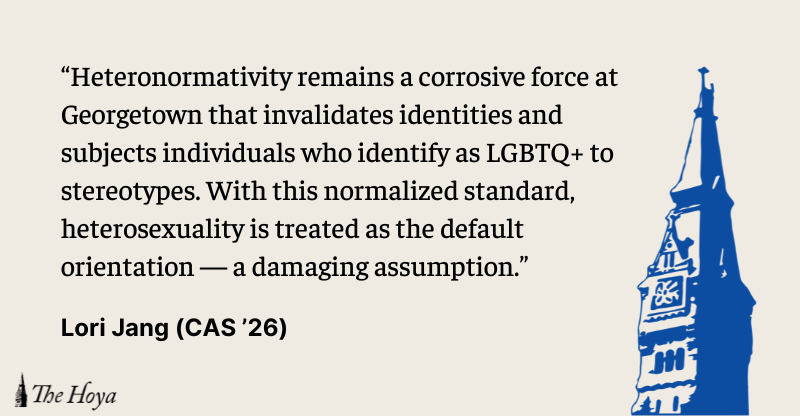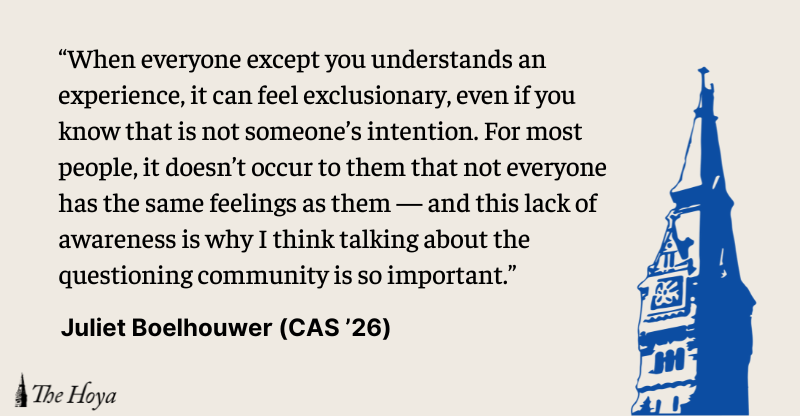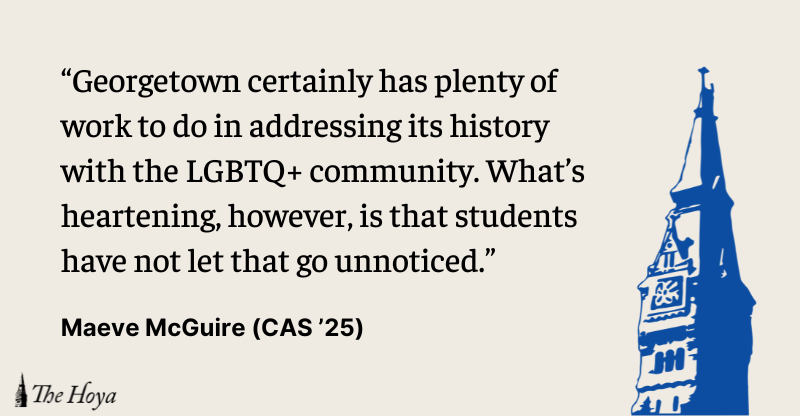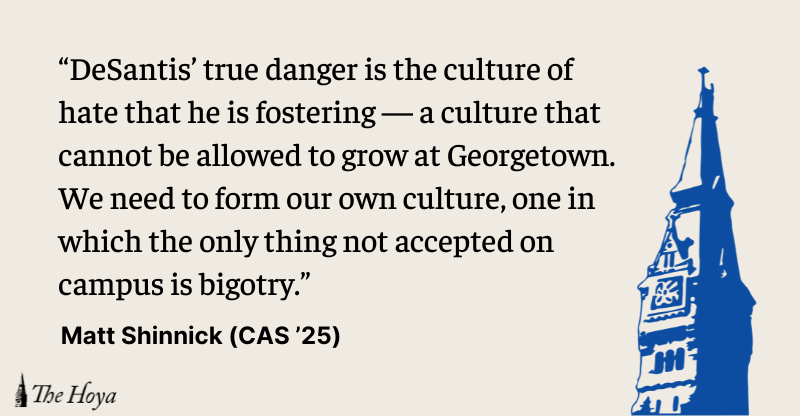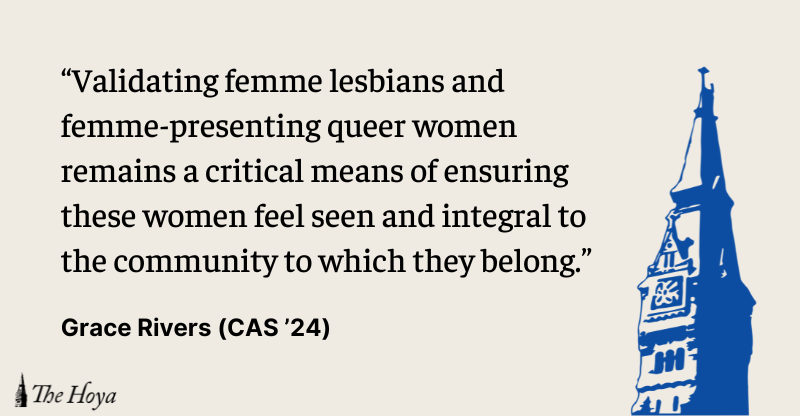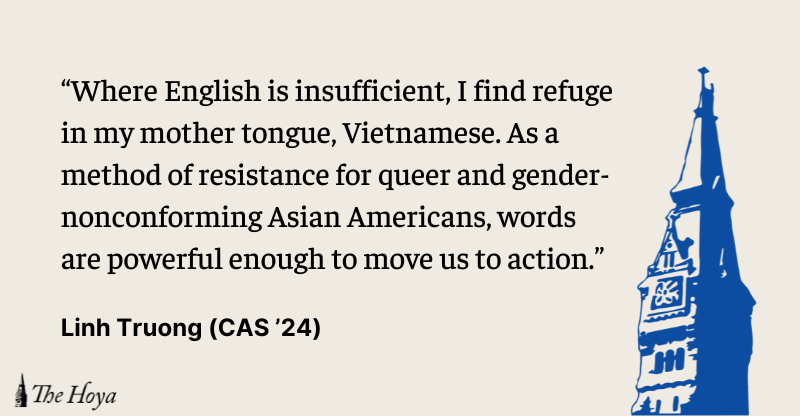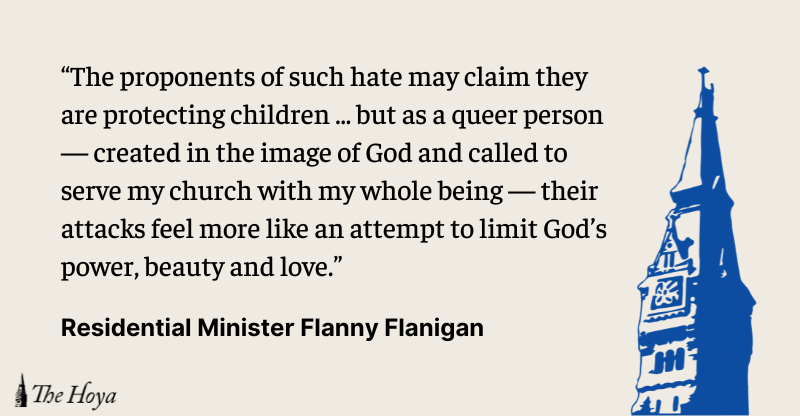I knew Georgetown University from the start was not established for students like me: a person of color, female and queer. After all, it wasn’t until 1969 that the university was fully coed. The prospect of applying to a religious institution was far from enticing to me as a senior in high school.
Despite — or maybe because of — growing up Christian, the idea that “religion” could be synonymous with “acceptance” felt foreign and paradoxical.
My community was kind and caring, but not unconditionally. It was established early on in my mind that the church did not love people like me — and the ones that did were a rarity. The choice came down to my religion or my sexuality.
Like deja vu, I found myself doubting the possibility of sincerely feeling comfortable in my own skin at a Jesuit university while applying to college. It’s safe to say I had major reservations about attending.
The Jesuit identity Georgetown University famously claims makes our campus an intimidating place for queer students. This is especially true when considering how the relationship between the church and the LGBTQ+ community is tumultuous.
While the university has made incredible strides to become a campus that encourages progress and acceptance of all community members — even being named the “Best College for LGBTQ+ Students in D.C.” — Georgetown remains far from perfect, and it’s still hard to say that I am fully comfortable within our gates.
To my surprise, it’s not because of our Jesuit ties.
With pervasive prominence on the Hilltop, heteronormativity — the concept of treating heterosexuality as the default sexual orientation — is deeply ingrained within our culture. As a result, Georgetown continues to perpetuate invalidating stereotypes that increasingly distort the perception of queer identity in our community.
This heteronormativity remains a corrosive force at Georgetown that invalidates identities and subjects individuals who identify as LGBTQ+ to stereotypes. With this normalized standard, heterosexuality is treated as the default orientation — a damaging assumption.
While Georgetown preaches being an inclusive space, gender-neutral bathrooms are not in all publicly accessible buildings. For most residential halls, this option does not exist.
As a result, the extent of the university’s LGBTQ+ inclusive policy is exposed: flimsy signage that reaffirms students’ freedom to choose a gendered bathroom they most closely identify with but resistance to actually establish such spaces. This forces individuals to adhere to norms that further enforce the gender binary.
A major problem with the Georgetown community is that students often only ever consider the possibility that someone is queer when they check the boxes for the stereotyped and generalized LGBTQ+ individual.
Too often have I seen my peers immediately assume someone was gay simply because of the way they dressed, talked or even walked. The moment someone does not fit these ideas of queerness, the possibility of the individual being queer is crossed off altogether.
Continuously imposing norms and conventions on each other is invalidating and suffocating. My sexual orientation and queer identity should not be reduced to the way I style or present myself. There is no one way to “appear” queer, and we should stop trying to force LGBTQ+ individuals into this box. Being queer is not some kind of aesthetic.
I am not someone who fits traditional stereotypes about queer individuals. More often than not, when discussing my own identity, I’m met with surprise. “Oh, I couldn’t tell” — or, “You look so straight!” — are statements that I’ve grown to be very familiar with.
By anchoring my identity to my outward image, I felt the pressure to present myself in a certain way grow exponentially. If I refused, it felt as if the integrity of my identity was closely scrutinized and invalidated.
On the flip side, our community is quick to label individuals as queer the moment they are seen in anything other than a heteronormative and binary light. Just because someone presents themselves in a certain way does not give us the jurisdiction to assume their identity.
Here at Georgetown, students have developed tunnel vision regarding those considered to be “queer-passing” individuals and in turn have invalidated the identities of those who do not fit a hetero-based LGBTQ+ stereotype.
Inclusivity does not thrive in complacency. Despite already receiving praise for its current strides toward progress, Georgetown can and should continue to grow instead of remaining content with its stagnation. Rather than viewing appearances and demeanor as an open invitation to dissect one’s personal orientation, Hoyas must remember that unwarranted questioning is wounding.
There is no checklist one must fill to be queer, and it is imperative we unlearn this together.
Lori Jang is a first-year student in the College of Arts & Sciences.


